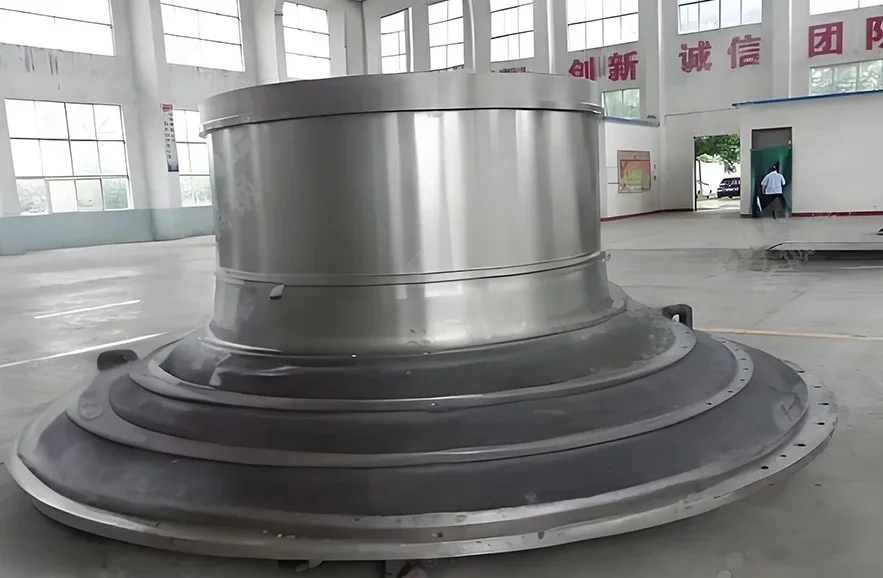In the realm of industrial machinery, ball mills play a critical role in various applications, including mining, cement production, and chemical processing. A key component of these machines is the ball mill head, also known as the end cover. This essential part not only supports the structure of the mill but also seals and protects the internal components from external elements. At Sawei, we specialize in manufacturing high-quality ball mill heads through advanced casting processes. In this article, we will delve into the intricacies of the casting process for durable ball mill heads and highlight their significance in ensuring optimal performance.

What is a Ball Mill Head?
The ball mill head is located at both ends of the mill cylinder and is supported by bearings. Its primary functions include:
- Support: It provides structural integrity to the ball mill, ensuring that it can withstand the operational stresses during grinding.
- Sealing: The head prevents material and grinding media from escaping the mill, maintaining efficiency and safety.
- Stability: A well-designed ball mill head contributes to the overall stability of the machine, reducing vibrations and enhancing performance.
Given these critical roles, the material selection and casting quality of ball mill heads are paramount.
The Casting Process Explained
The casting process for ball mill heads involves several key steps that ensure durability and performance. Here’s an overview of how it works:
1. Material Selection
The choice of material significantly influences the performance and longevity of ball mill heads. Common materials used include:
- Cast Iron: Known for its excellent wear resistance and machinability.
- Alloy Steel: Offers enhanced strength and toughness, making it suitable for high-stress applications.
- Cast Steel: Provides a good balance between strength and ductility.
At Sawei, we utilize high-quality materials such as ZG230-450 and ZG42CrMo to manufacture our ball mill heads, ensuring they can withstand rigorous operational conditions.
2. Pattern Making
The first step in the casting process is creating a pattern that represents the final shape of the ball mill head. Patterns are typically made from materials like wood or metal and are designed to accommodate shrinkage during cooling.
3. Molding
Once the pattern is ready, it is placed in a mold box filled with sand or other molding materials to create a cavity in which molten metal will be poured. The molding process must ensure that there are no air pockets or defects that could compromise the integrity of the final product.
4. Melting and Pouring
The selected metal is then heated until it reaches a molten state. This molten metal is carefully poured into the mold cavity created by the pattern. Precision during this step is crucial to avoid defects such as cold shuts or inclusions.
5. Cooling and Solidification
After pouring, the molten metal must cool and solidify within the mold. This phase is critical as it determines the microstructure and mechanical properties of the cast product. Controlled cooling rates can help achieve desired characteristics such as hardness and tensile strength.
6. Finishing Operations
Once cooled, the cast ball mill head is removed from the mold. It may undergo various finishing operations such as machining to achieve precise dimensions, surface treatment for enhanced durability, and inspection for quality assurance.
Quality Control Measures
To ensure that our ball mill heads meet industry standards, Sawei implements rigorous quality control measures throughout the casting process:
- Material Testing: We conduct thorough tests on incoming raw materials to verify their composition and quality.
- Dimensional Inspection: Each cast head undergoes dimensional checks to ensure compliance with specifications.
- Non-Destructive Testing (NDT): Techniques such as ultrasonic testing are employed to detect internal flaws without damaging the product.
Importance of High-Quality Ball Mill Heads
Investing in high-quality ball mill heads offers several advantages:
- Enhanced Durability: Well-cast heads made from premium materials resist wear and tear over time, reducing maintenance costs.
- Improved Performance: A stable ball mill head contributes to smoother operation and better grinding efficiency.
- Longer Service Life: Quality construction minimizes failures, extending the lifespan of both the head and the entire milling system.
Conclusion
Understanding the casting process for durable ball mill heads is essential for anyone involved in industrial manufacturing or maintenance. The quality of these components directly impacts operational efficiency and longevity in various applications.
At Sawei, we pride ourselves on our expertise in producing high-quality ball mill heads through advanced casting techniques. Our commitment to using superior materials combined with stringent quality control measures ensures that our products meet the highest industry standards. As industries continue to evolve, we remain dedicated to providing innovative solutions that enhance performance and reliability.
For more information about our products or to discuss your specific requirements, feel free to contact us at Sawei! Let us help you achieve optimal results in your milling operations with our durable ball mill heads.
